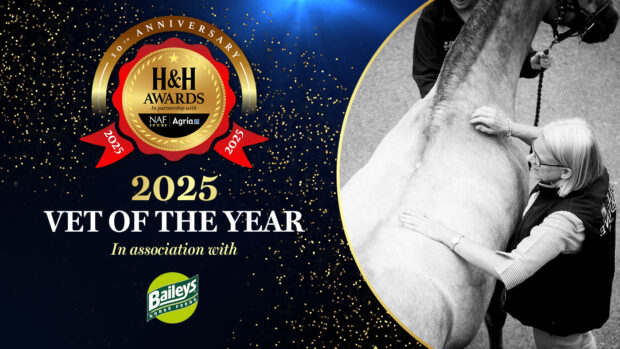Experts have come together to take a cross-industry look at how to solve staff shortages across Europe.
The European Horse Network, a not-for-profit support organisation, hosted a webinar on “challenges and opportunities and how to attract a young workforce in the equestrian industry” on 28 November. It brought together research and top speakers including equine vet Lucy Grieve and founder of the British and international grooms associations, Lucy Katan.
How to tap into what drives people, practical ways of avoiding physical burnout, and why the sustainability of the equestrian world – economically as much as in other ways – is critical to attracting future workers, were all on the table.
Economist Lumi Drozzin and Minna Peltonen, the Finnish equestrian federation’s sustainability officer and business development specialist, presented findings from recent research in the country.
Two standout points were how young workers are value-driven when it comes to careers, and, at the other end of the spectrum, that physical injury is one of the leading reasons for early retirement.
“Young workers value continuous learning, innovation and meaningful work. They appreciate environments where they are encouraged to try new things, and where their mental wellbeing is prioritised,” said Ms Peltonen.
“I think one of the biggest issues that we actually can influence is that young people, who will be our future workforce, make more value-based decisions [including] concerning their work life.”
She added that the future of the equine industry depends on sustainability, in terms of economics, social issues, horse welfare, nature and the climate.
The day-to-day value of embracing technology to lighten people’s physical loads and reduce employee fatigue where possible was also stressed.
“It’s not just something to enhance to attract people, but I also think it’s a horse wellbeing question as well,” said Ms Peltonen. “Because when we free time from doing hard manual labour, we can use that time for the benefit of the horses or enhance the horses’ wellbeing.”
Ms Drozzin added: “Physical injuries and needing to step away from the field is currently one of the three top reasons to retire before your retirement age. So adopting digital solutions and technologies in order to make work easier would really benefit the whole agricultural sector.”
Ms Katan highlighted continued issues she has seen with non-compliance of employment laws and the shrinking pool of people wanting to undertake physical work. She also noted that when “good employment is embraced”, it has a positive effect throughout the “spider’s web” of workplace issues.
“The simple fact is that the employment position should be the same as in any other sector, by adhering to the law,” she said.
“We must clean up our industry – that’s worldwide. Every place of employment should be under the banner of good employment. We shouldn’t be thinking, ‘Will they get a contract? Will they get paid correctly?’. The advice is there, but it’s being ignored, especially in the competition sector.”
Agro-economic engineer Emma Humbert presented a new employer rating system by French firm Équi-Ressources. This will grade yards based on criteria including wages, how far in advance rotas are drawn up, time-off allowances, what technology is available to make the job easier, employee interviews, and much more. The hope is that it gives validation to good employers, transparency to the industry and also acts as an incentive.
Ms Grieve shared insight into the picture in the equine veterinary world, sharing eye-opening statistics from a recent British Equine Veterinary Association survey, as well as the wider international industry.
“In terms of our recruitment in the UK, we have over 50% [of practices] struggling to recruit new graduate veterinarians and 77% of practices are reporting struggling to recruit experienced vets, which is a major problem,” she said. “That shows us that people are leaving the profession later on in their careers, taking the experience they’ve gained with them.
“Fifteen percent of practices have struggled to recruit trainee nurses and 45% have struggled to recruit experienced nurses. They’re quite shocking statistics.”
It is a problem the veterinary industry is trying to solve from multiple angles worldwide: encouraging school pupils to think about it as a career, pointing to students the “very good” sides to specialising in equine, and educating clients on being respectful.
“One tagline we came up with was that we’re trying to make the work fit the workforce, not the workforce fit the work,” Ms Grieve said. “We’re trying to get practices, clients and the whole industry to understand that we need to try to be flexible, to allow those workforce members to be able to carry out their job satisfactorily.”
You might also be interested in:

Subscribe to Horse & Hound magazine today – and enjoy unlimited website access all year round

Bullied groom speaks up on job that was ‘killing’ a colleague as study finds illegal employment rife

‘We let the horses be themselves’: top tips and insight from an international groom
Horse & Hound magazine, out every Thursday, is packed with all the latest news and reports, as well as interviews, specials, nostalgia, vet and training advice. Find how you can enjoy the magazine delivered to your door every week, plus options to upgrade your subscription to access our online service that brings you breaking news and reports as well as other benefits.




